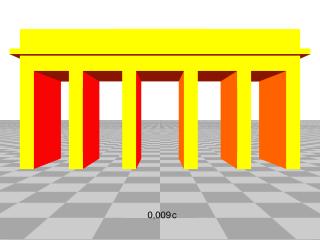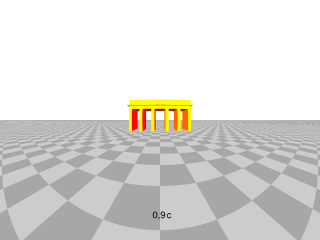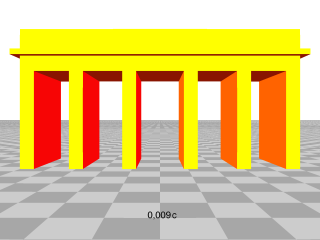Relativity visualized


On this relativistic trip we start from rest, accelerate to 90% of the speed of light, slow down again and then stop. While moving we look ahead and there see the Brandenburg Gate that we approach with this short sprint.
The gate seems to recede into the distance! In spite of the fact that we are approaching it and even approaching at an accelerated rate.
For comparision we follow the same route with a much smaller acceleration leading to a maximum velocity of "only" 0.9% of the speed of light (a mere 2700 kilometres per second) – at this velocity, no relativistic effects are visible.
As expected, the gate gradually comes closer.
So what is the reason for the surprising impression of the receding gate during the first, fast trip?
The following two images illustrate the main effect. They are taken at the moment of maximum velocity, 90% of the speed of light (trip 1, left) and 0.9% of the speed of light (trip 2, right), respectively. The momentary position of the camera is the same in both cases; the only difference is the difference in camera speed.


When the camera moves at nearly the speed of light, the gate looks smaller and seems to be farther away. This is a necessary consequence of the finite speed of light propagation – why, is explained in detail in the section Through the city at nearly the speed of light.
From this, then, it becomes clear why the gate seems to recede during the accelerated fast trip: When the velocity of the camera comes close to the speed of light, then the effect illustrated above becomes apparent: The gate seems to be farther away than on the picture taken by a camera at rest (or moving slowly) at the same position. Further acceleration increases the camera speed so that this effect becomes even stronger - the gate seems to move into the distance.
Contact: Would you like to send us a message?